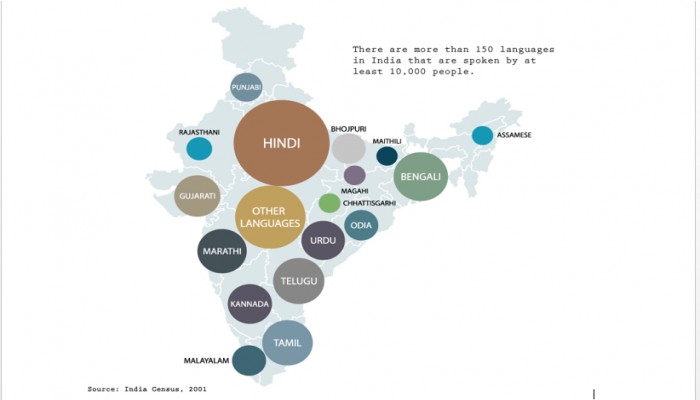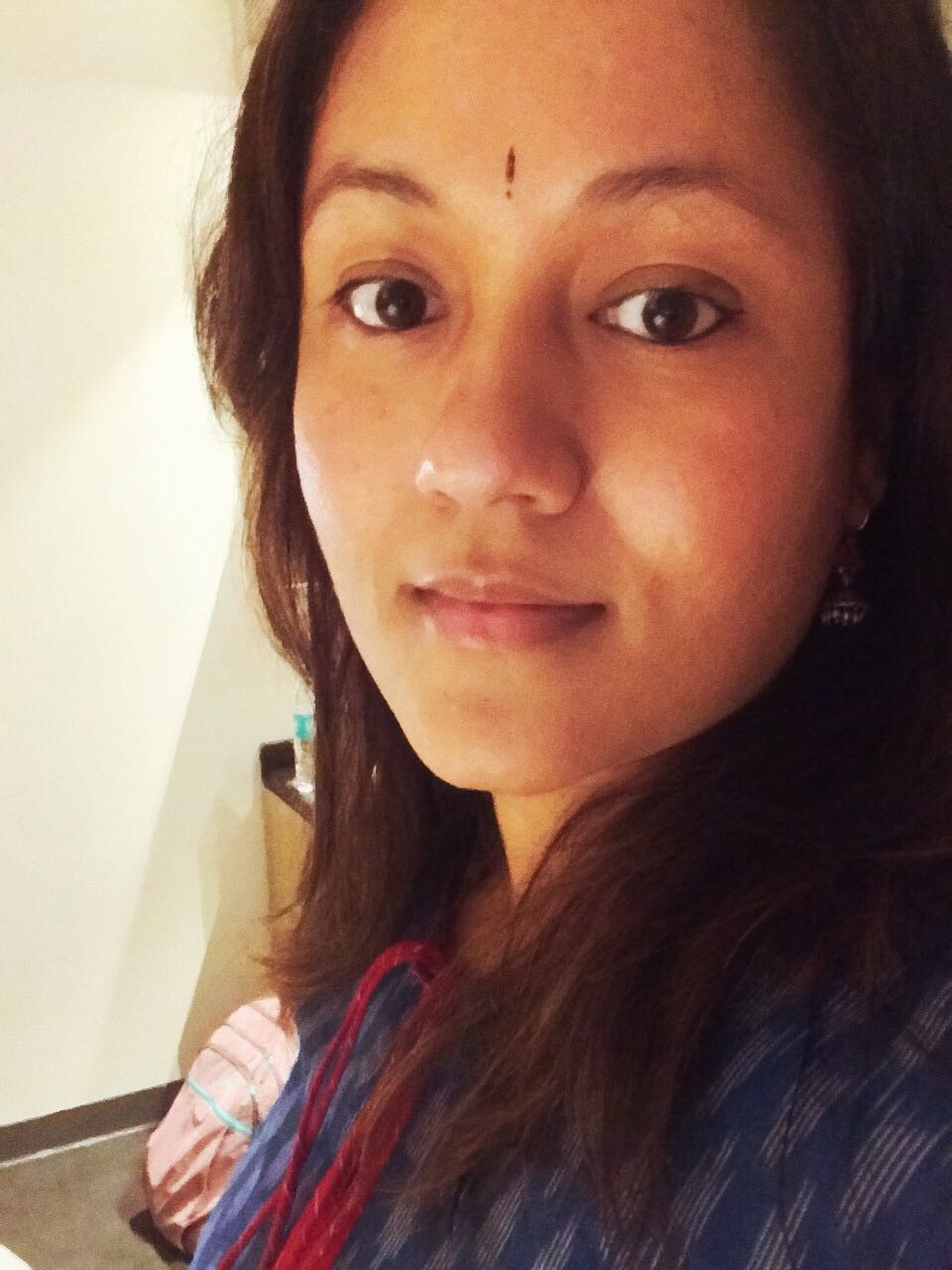The Eroding Indic Languages- Will they survive?
- In History & Culture
- 10:13 AM, Jul 07, 2018
- Lavanya Shivashankar
Psychology Today once called language the cultural tool that sets humans apart from any other species, the symbolic behavior that allowed human singularities of art, religion, science, to occur. But in India, an emotive fixation on language and the way major languages interact with each other, consumes public dialogue. Let's examine this in the wider context of link languages that contribute to propagation and acceptance of languages.
Urdu developed among the various outsider nationalities (for want of a better word) that comprised the mercenary followers of the invader wave that broke in the 18th C. It literally meant camp language and was a link language between these fellows, and the Indian converts who spoke their own mother tongues. It was a language that came out of organic necessity and went on to become the interface of the Islamic world with the world of the people they were conquering and converting.
It also enabled greater participation of Indians, and subsequently Hindus, in the administration of large provinces like Awadh and Bengal, and later, in the governance system set up by the British. Post 1857, the British were very wary of who they chose to aid them in ruling India and thanks to Urdu, an entire class arose that took advantage of this mistrust to forge job opportunities for themselves. A link language by its very nature, is flexible enough to expand and accommodate local flavours and that’s what Urdu did, gradually accommodating enough local flavor to make the Indian Muslim comfortable to replace it with their mother tongue.
In response to this subsuming of identity into religion, Hindi in the Devanagari script developed as the interface of the Sanskritic, Vedic world with modern Hindus. Thus Hindi, as the link language, let Hindus of northern India talk to each other through a rooted, shared medium. This helped Hindu northerners who were left out of either English or Urdu owing to economic or religious circumstance.
Since it was a link language for northern Hindus, spoken Hindi in Awadh, in western and eastern UP, even say Bihar or Himachal, or as a Bangali would learn to speak it, was flexible enough to accommodate the mother tongues and dialects of these regions in all their idiomatic glory. It also helped preserve and express Hindu religiosity seamlessly from Sanskrit, ably assisted by dharmic entrepreneurial efforts like The Gita Press, so in that sense, it was the true daughter of Sanskrit.
In the 1920s, upto post independence, the *Chhayawad* phase of writing in Hindi was about suffusing joy and humanism in Hindi authorship, reveling in and glorifying Indic, dharmic tradition and molding entire generations of Hindus through some of the most powerful and beautiful writing possible. That was the time when the socialist, atheist voice was traversing through Urdu poetry and expression. Later writers and poets were influenced by socialism and using satire or blunt speak as a weapon to shock the masses into a socio-political awakening. Alas, once the 1970s ended, along with the golden period of Hindi magazines, the firebrand Hindi writer went into oblivion too.
Now, Urdu spoken in Bombaiyya movies and written in *Hindi* newspapers is vastly different from authentic Urdu, of the type spoken by elite and holdovers from another era. This pidgin Urdu is the minimum common denominator between the creative crowd that flocked to mass media in its early days, and its largely unread audience. The Urdu speaking crowd comprised Muslim folk because they had been leading public entertainment through the past 900 years, all from different regions and classes, and the few Hindus who chose to work in entertainment, seduced by the cultural cache. Their argot was different from their audience, so they diluted the foreign element to introduce the vernacular, and thus this pidgin hash of the Islamic link language became the vehicle for all ideas that sprang out of mass media.
The pidgin movie and newspaper Urdu slowly became what most of northern India's Muslims started to speak as their numbers grew, their literary elite left for Pakistan and they studied Hindi in the Devanagari script as their primary language. At this stage you must remember that the invaders didn't bother to learn any of our languages, we had to learn theirs. Hence, administrative and legal terms in the north upto Bengal remain Farsi/ Urdu whether or not its speakers talk like that anymore.
But this is where socio-economic forces stepped in, post-Independence. Urdu is now the linguistic face of a resurgent, hardening Muslim identity in India. At first, Leftie identity-politics forcefully ghettoized it and then, having succeeded, they've realized their mistake. Muslim education of a certain socio-economic strata is now not in English and Hindi, so the ghettoization has to be reversed if they and their ideas are to be mainstreamed.
Hence the Lefties are trying to make pidgin, Indianised Urdu the one link language across northern India by replacing Hindi. To jaundice young minds, there is replacement and melding of Hindi terms with pedestrian Urdu ones (not all of them familiar to students) across the board in text books. Firebrand young Turks or the New Romantic Chhayawadis, all have fallen by the wayside. Thus, a junior or middle schooler won't be able to point out the difference between Hindi and Urdu as languages. Secondly, Lefties are demonizing Hindi in their racist, regionalist rants as the demographically overwhelming language of culturally inferior outsiders distorting southern Indian culture.
Unfortunately, southern Indian culture is inseparably Hindu culture, Hinduism is the link faith between folk in an entire subcontinent. So our Leftie Brown Sahibs, and this is important, NEVER let a link language develop between the four southern states. The only link language would be Sanskrit which few know or speak.
So, unlike southerners travelling up who had to learn just one link language to get by, there was no one link language to learn and get by when northerners were travelling down. Since Nature abhors a vacuum, English stepped in and now, for better or for worse, the southern link language is an alien, invader tongue.
I've said it before and I cannot emphasize it enough - the single biggest threat to Indian languages is from English, because half the country was conditioned to choose it as their link language, and vehemently, emotionally, reject a replacement as an attack on their identity. The other half views it as a gateway to a better life with more job opportunities within the country. Speaking in English for them is a way to show off their upward social mobility – that they can afford expensive public schools for their children, they have more money, are more cultured, better travelled...
Our education system has ensured that regular Indians can only recognize, or read, the Roman script and at most their mother tongue, and barely understand what's written in either. The languages that we speak, are bastardised with English, Hindi, Urdu, words picked up from living here or there, or off the TV or the movies. Which means you have a young populace across the country that can neither read nor write almost any language, including their own, perfectly. And they speak a pidgin hodge-podge of their mother tongue, English, and a smattering of either Hindi if they're Hindu, and Urdu if they're Muslim.
As a result, all our cities are the notorious Babel, our languages a mish mash of an entire subcontinent’s worth of expression.
With the demise of the joint family, and a move to an urban milieu, either both parents are working or the stay at home mother is struggling with a household - chore imbalance. This means there is substantial memory leakage, and loss of inheritance - ritualistic, and linguistic. Thus, a substantial part of the under 25 crowd gets their cue - whether religious, ritualistic, linguistic, patriotic, historic or even behavioral, from mass media.
Thus, once again we're approaching uniformity across the country driven by popular culture, just that this popular culture is mixed in a lab, so to speak. I don't see ANY of our languages surviving this onslaught in the next two decades and I'd be happy to be proven wrong. As populations rise and both employment and employability are limited, states will increasingly see protectionist policies aimed at controlling internal migration. In the absence of a coordinated dharmic response, Hindus will lose further if they continue to place language over faith and agree to the erasure of the Hindu roots of regional culture.
In my estimation, two things can stanch it: - encouraging folk to learn the language of the state they're living in through some incentive. - passing on one’s language to their progeny, and encouraging them to learn as many Indic languages as possible. This is not possible if any language is denigrated or abused because an indic language will always be better than an alien language that didn’t spring from the land.
Indians are intuitive communicators. We learn to speak languages quickly. We have an ear for words, all our languages are musical, very attuned to nature and to life as experienced by us as humans on earth. Communication for us hasn't ever really needed a script maybe that's the way forward.







Comments